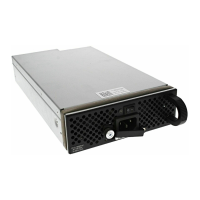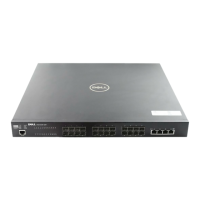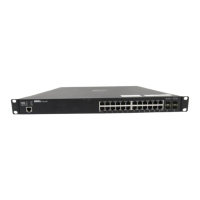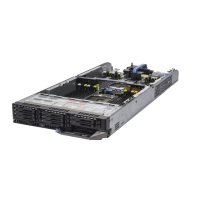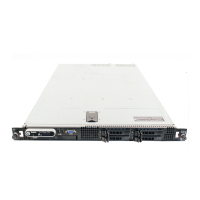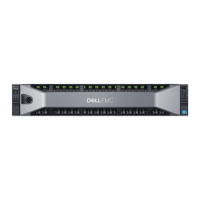624 | Virtual LANs (VLAN)
www.dell.com | support.dell.com
Table 37-1 lists the defaults for VLANs in FTOS.
Default VLAN
When you configure interfaces for Layer 2 mode, they are automatically placed in the default VLAN as
untagged interfaces. Only untagged interfaces can belong to the default VLAN.
Figure 37-1 shows the outcome of placing an interface in Layer 2 mode. To configure an interface for
Layer 2 mode, use the
switchport command.
In Step 1, the
switchport command places the interface in Layer 2 mode. In Step 2, the show vlan command
in EXEC privilege mode indicates that the interface is now part of the Default VLAN (VLAN 1).
Figure 37-1. Interfaces and the Default VLAN Example
By default, VLAN 1 is the default VLAN. To change that designation, use the default vlan-id command in
CONFIGURATION mode. You cannot delete the default VLAN.
Table 37-1. VLAN Defaults on FTOS
Feature Default
Spanning Tree group ID All VLANs are part of Spanning Tree group 0
Mode Layer 2 (no IP address is assigned)
Default VLAN ID VLAN 1
Note: You cannot assign an IP address to the default VLAN. To assign an IP address to a VLAN that is
currently the default VLAN, create another VLAN and assign it to be the default VLAN. For more
information about assigning IP addresses, refer to Assign an IP Address to a VLAN.
FTOS(conf)#int tengig 3/2
FTOS(conf-if)#no shut
FTOS(conf-if)#switchport
FTOS(conf-if)#show config
!
interface Tengigabitethernet 3/2
no ip address
switchport
no shutdown
FTOS(conf-if)#end
FTOS#show vlan
Codes: * - Default VLAN, G - GVRP VLANs
NUM Status Q Ports
* 1 Active U Tengig 3/2
2 Active T Po1(So 0/0-1)
T Tengig 3/0
FTOS#
Step 1—the switchport command
places the interface in Layer 2 mode
Step 2—the show vlan command
indicates that the interface is now
assigned to VLAN 1 (the * indicates
the Default VLAN)
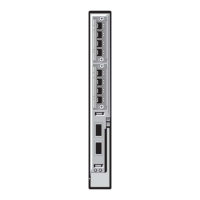
